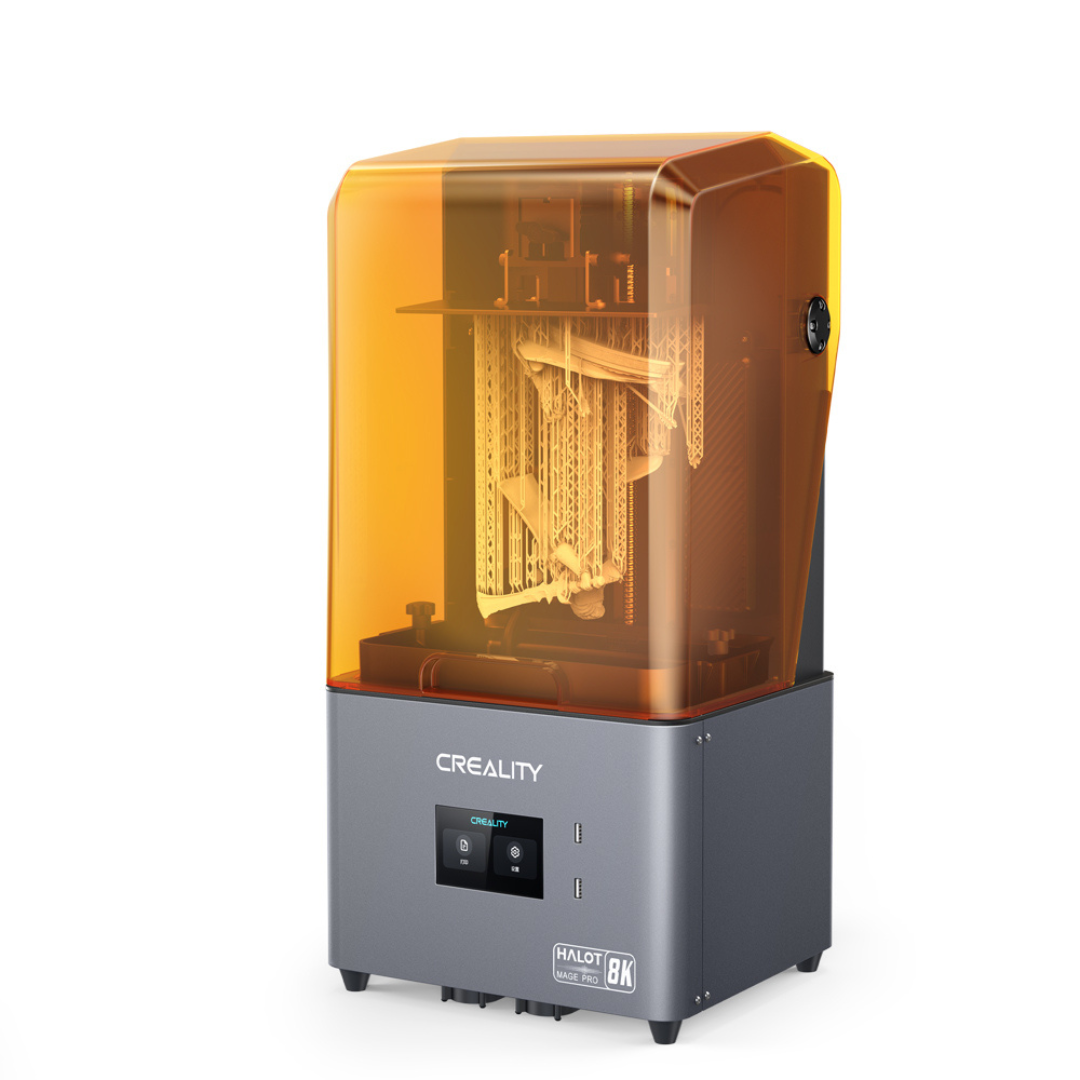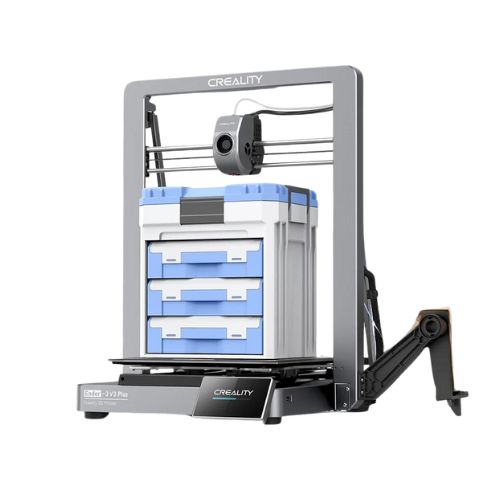Compare Halot Mage PRO vs Ender 3 V3 Plus
Comparison between the best 3D printers
Choose the best 3D printer at the best price. The cheapest 3D printers are here.
Buy a 3D printer here with 3D Fila.
 |
 |
|
| Model | Halot Mage PRO |
Ender 3 V3 Plus |
| Printing Material | Resin | Filament |
| Buy Resin for Creality 3D Halot Mage PRO | Buy Filament forCreality Ender 3 V3 Plus | |
| Estimated price | $479,00 | $479,00 |
| Manufacturer | Creality 3D | Creality |
| Release Year | 2023 | 2024 |
| Print Volume [mm] | 228x128x230 | 300x300x330 |
| Printer Size [mm] | 333x270x608 | 410x445x577 |
| Weight [kg] | 13,3 | 11,5 |
| Power Loss Recovery | NO | YES |
| Maximum Resolution [mm] | 0,01 | 0,1 |
| Processor | ||
| Display | Display touchscreen 4,3'' | Touchscreen 4,3'' |
| Power Supply | 150 W | 350 W |
| Connectivity | USB / Wi-Fi / Ethernet | Wifi, Bambu bus, Cartão SD |
| Operating systems | Windows, Mac, Linux | Windows, Linux, Macbook |
| Date of registration in the system | 2023-12-18 | 2024-05-10 |
| Release date | 2023 | 2024 |
| Extra features | The Creality HALOT-MAGE PRO is an advanced resin 3D printer, distinguished by its high build quality and detailed prints. It uses SLA technology with an 8K LCD screen, providing refined prints in a 228x128x230mm area. It offers an impressive printing speed of up to 170mm/h. Its design includes an automatic resin management system and an integrated air purifier, making it easier to use and reducing odors. Although it requires post-print cleaning, its intuitive interface and connectivity options such as cloud and LAN make the HALOT-MAGE PRO a robust choice for professionals and enthusiasts. | The Ender 3 V3 Plus incorporates significant advancements in 3D printing, featuring a build volume of 300300330mm. It features a Creality operating system based on Klipper, which supports advanced functions such as linear advance and input shaping, and allows precise adjustments through root access or expert mode. The CoreXZ motion system allows a printing speed of up to 600mm/s, with an acceleration of up to 20000mm/s². Equipped with a flexible build plate and a quick-change nozzle with a hardened steel tip, the printer offers simplified maintenance and increased durability. Additionally, the high-speed direct drive technology of the extruder, together with an automatic leveling system and filament end sensors, raise the standard for reliability and efficiency. Compatible with a variety of filaments, including PLA and PETG, the Ender 3 V3 Plus is a robust choice for 3D printing enthusiasts and professionals. |
| Support for multiple colors and materials (AMS and CFS) | NO | NO |
Notes * |
||
| Cost-benefit | 8 / 10 | 7 / 10 |
| Hardware | 3.5 / 10 | 3.2 / 10 |
| Tela | . | . |
| Print volume | 3 / 10 | 4 / 10 |
| Performance | 9 / 10 | 5 / 10 |
Conclusion |
| In conclusion, both the Halot Mage PRO and the Ender 3 V3 Plus present compelling options for 3D printing enthusiasts, with each offering distinct advantages based on their technology and design. The Halot Mage PRO, as a resin printer, excels in producing high-resolution prints with impressive detail, making it ideal for applications where precision is paramount. Its advanced features, such as automatic resin management and integrated air purification, enhance user experience and practicality. However, the smaller print volume limits its versatility when dealing with larger designs and the lack of power loss recovery could be a concern for uninterrupted printing. On the other hand, the Ender 3 V3 Plus offers a larger build volume and the capacity to print at significantly higher speeds, thanks to its innovative motion system and advanced Creality operating system. This model also incorporates user-friendly features such as an automatic leveling system and compatibility with a variety of materials, catering to a wider range of projects and user preferences. Ultimately, the best choice between these two printers will depend on the user's specific needs—whether they prioritize high-detail resin prints or larger, faster FDM capabilities. Given their similar price points, potential buyers should weigh their individual requirements and intended applications to determine which printer aligns best with their 3D printing goals. |

